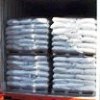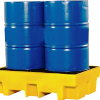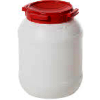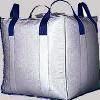Pure Calcium Levulinate & BP USP Grade Manufacturers Suppliers, India
Anmol Chemicals are manufacturers of Specialty Chemicals and Pharmaceutical Excipients, in India. Anmol Chemicals Group has manufacturing facilities spread across India, representatives in Houston Chicago USA and toll manufacturers in China. We make IP, BP, USP, Ph Eur, FCC or Food Grade, ACS, AR or Analytical Reagent Grade, LR or Laboratory Reagent Grade and Pure Grades of various chemicals. All our items are analyzed to meet the required standards.
Our manufacturing facility is FDA GMP approved and ISO-9001, ISO 14000, OHSAS 18000, ISO 22000, FSSAI HACCP certified. We are offering products manufactured as per Kosher and Halal approved method. We are pre-registered with "Reach" for export to European countries.
CAS No.: 5743-49-7 for Dihydrate and 591-64-0 for Anhydrous, EC Code EINECS: 209-725-9, Molecular Weight: 306.32 for Dihydrate and 270.30 Anhydrous, Chemical Formula: C10-H14-Ca-O6-(H2O)2 for Dihydrate and C10-H14-Ca-O6
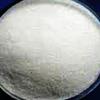
Calcium Levulinate is a calcium compound used parenterally in the treatment of hypocalcemia; contains 14.8% calcium. It is a hydrated calcium salt of levulinic acid. It has the usual effects of calcium administered orally or intravenously.
Calcium Levulinate USP Grade
C10H14CaO6.2H2O -- 306.32
Calcium levulinate (1:2) dihydrate [5743-49-7].
Anhydrous 270.30 [591-64-0].
Calcium Levulinate contains not less than 97.5 percent and not more than 100.5 percent of C10H14CaO6, calculated on the dried basis.
Identification—
A: A solution (1 in 10) responds to the tests for Calcium.
B: To a solution of 0.5 g in 5 mL of water add 5 mL of 1 N sodium hydroxide, and filter. To the filtrate add 5 mL of iodine: a precipitate of iodoform is produced.
Melting range: between 119 and 125 .
pH: between 7.0 and 8.5, in a solution (1 in 10).
Loss on drying: Dry it at a pressure not exceeding 5 mm of mercury at 60 for 5 hours: it loses between 10.5% and 12.0% of its weight.
Chloride: A 1.0-g portion shows no more chloride than corresponds to 1.0 mL of 0.020 N hydrochloric acid (0.07%).
Sulfate: A 2.0-g portion shows no more sulfate than corresponds to 1.0 mL of 0.020 N sulfuric acid (0.05%).
Heavy metals: 0.002%.
Reducing sugars: Dissolve 0.50 g in 10 mL of water, add 2 mL of 3 N hydrochloric acid, boil for about 2 minutes, and cool. Add 5 mL of sodium carbonate, allow to stand for 5 minutes, dilute with water to 20 mL, and filter. Add 5 mL of the clear filtrate to about 2 mL of alkaline cupric tartrate, and boil for 1 minute: no red precipitate is formed immediately.
Calcium Levulinate Dihydrate BP Grade
Ph Eur
C10H14CaO6,2H2O -- 306.3 -- 5743-49-7
DEFINITION
Calcium di(4-oxopentanoate) dihydrate.
Content: 98.0 per cent to 101.0 per cent (dried substance).
CHARACTERS
Appearance: White or almost white, crystalline powder.
Solubility: Freely soluble in water, very slightly soluble in ethanol (96 per cent), practically insoluble in methylene chloride.
IDENTIFICATION
First identificationi A, D, E.
Second identificationi B, C, D, E.
A. Infrared absorption spectrophotometry comparisoni calcium levulinate dihydrate CRS.
B. Thin-layer chromatography.
Test solution: Dissolve 60 mg of the substance to be examined in water and dilute to 1 ml with the same solvent.
Reference solution: Dissolve 60 mg of calcium levulinate dihydrate CRS in water and dilute to 1 ml with the same solvent.
Plate: TLC silica gel plate.
Mobile phase: concentrated ammonia, ethyl acetate, water, ethanol (96 per cent) (10:10:30:50 V/V/V/V).
Application: 10 μl.
Development: Over a path of 10 cm.
Drying: At 100-105 °C for 20 min and allow to cool.
Detection: Spray with a 30 g/l solution of potassium permanganate. Dry in a current of warm air for about 5 min or until the spots become yellow. Examine in daylight.
Results: The principal spot in the chromatogram obtained with the test solution is similar in position, colour and size to the principal spot in the chromatogram obtained with the reference solution.
C. To 1 ml of solution S (see Tests), add 20 ml of a 2.5 g/l solution of dinitrophenylhydrazine in dilute hydrochloric acid. Allow to stand for 15 min. Filter, wash the precipitate with water. Dry the precipitate in an oven at 100-105 °C. The melting point is 203 °C to 210 °C.
D. It gives reaction of calcium.
E. Loss on drying (see Tests).
TESTS
Solution S: Dissolve 10.0 g in carbon dioxide-free water R prepared from distilled water and dilute to 100.0 ml with the same solvent.
Appearance of solution: Solution S is clear and not more intensely coloured than reference solution.
pH: 6.8 to 7.8 for solution S.
Oxidisable substances: To 1 ml of solution S, add 10 ml of water, 1 ml of dilute sulphuric acid and 0.25 ml of a 3.0 g/l solution of potassium permanganate. Mix. After 5 min, the violet colour of the mixture is still visible.
Sucrose and reducing sugars: To 5 ml of solution S add 2 ml of hydrochloric acid and dilute to 10 ml with water. Heat to boiling for 5 min and allow to cool. Add 10 ml of sodium carbonate solution. Allow to stand for 5 min, dilute to 25 ml with water and filter. To 5 ml of the filtrate add 2 ml of cupri-tartaric solution and heat to boiling for 1 min. No red precipitate is formed.
Chlorides: Maximum 50 ppm.
Sulphates: Maximum 200 ppm.
Magnesium and alkali metals: Maximum 1.0 per cent.
To 10 ml of solution S, add 80 ml of water, 10 ml of ammonium chloride solution R and 1 ml of ammonia. Heat to boiling. To the boiling solution, add drop-wise 50 ml of warm ammonium oxalate solution. Allow to stand for 4 h, then dilute to 200 ml with water and filter. To 100 ml of the filtrate, add 0.5 ml of sulphuric acid. Evaporate to dryness on a water-bath and ignite to constant mass at 600 ± 50 °C. The residue weighs a maximum of 5.0 mg.
Heavy metals: Maximum 10 ppm.
Loss on drying: 11.0 per cent to 12.5 per cent, determined on 0.200 g by drying at 105 °C.
Pyrogens: If intended for use in the manufacture of parenteral dosage forms without a further appropriate procedure for the removal of pyrogens, it complies with the test for pyrogens. Inject per kilogram of the rabbit's mass 4 ml of a solution containing per millilitre 50 mg of the substance to be examined.
Manufacturers
ANMOL CHEMICALS
S-8, SARIFA MANSION, 2ND PRINCIPAL SHAIKH HASAN MARG, MUMBAI 400009, INDIA
TEL: (OFF) 91-22-23726950, 23774610, 23723564. FAX: 91-22-23728264
e-mail: info@anmol.org
Copyright and Usual Disclaimer is Applicable
Exporters to USA, UAE, Europe, South Africa, Tanzania, Kenya, Egypt, Turkey, Nigeria, Uganda, Brazil, Chile, Argentina, Dubai etc.
Representatives in New York, Houston - Texas, Chicago - Illinois, Los Angeles.
Fast Selling IP BP USP ACS FCC Food Grades of Chemicals by Anmol Chemicals
Aluminum Chloride ---------- Ammonium Sulfate ----- Ammonium Persulfate
Aluminum Potassium Sulfate - Ammonium Chloride ---- Ammonium Bicarbonate
Ammonium Carbonate --------- Benzyl Alcohol ------- Boric Acid
Benzoic Acid --------------- Borax; Sodium Borate - Calcium Chloride
Calcium Hydroxide ---------- Calcium Acetate ------ Calcium Butyrate
Calcium Lactobionate ------- Calcium Levulinate --- Calcium Saccharate
Carbamide Peroxide --------- Citric Acid ---------- Calcium Phosphate
Calcium Oxide -------------- Calcium Sulfate ------ Chromic Chloride
Cupric Chloride ------------
Ferric Chloride ------------ Ferric Nitrate ------- Fumaric Acid
Gentian Violet ------------- Glacial Acetic Acid
Lactobionic Acid ----------- Magnesium Butyrate
Magnesium Oxide ------------ Magnesium Chloride --- Magnesium Sulfate
Malic Acid ----------------- Maleic Acid ---------- Manganese Chloride
Manganese Sulfate ---------- Methylene Blue ------- Oleic Acid
Octyldodecanol -------------
Propylene Carbonate -------- Potassium Acetate ---- Potassium Carbonate
Potassium Hydroxide -------- Potassium Chloride --- Potassium Phosphate
Potassium Bitartrate ------- Propylene Carbonate -- Selenious acid
Sodium Molybdate ----------- Sodium Perborate ----- Sodium Phosphate
Sodium Propionate ---------- Sodium Acetate ------- Sodium Bicarbonate
Sodium Hydroxide ----------- Sodium Chloride ------ Sodium Thiosulfate
Sodium Selenite ------------ Urea ----------------- Zinc Chloride
Other Best Selling Products
Ammonium Bromide ----------- Ammonium Phosphate --- Barium Chloride
Butylated Hydroxyanisole --- Butylated Hydroxytoluene
Calcium Nitrate Nitrite ---- Calcium Propionate --- Copper Sulfate
Ceric Ammonium Nitrate ----- Cinnamaldehyde ------- Isatoic Anhydride
Directly Compressible Calcium Carbonate ----------- Encapsulated Citric Acid
Encapsulated Fumaric Acid -- Encapsulated Sodium Bicarbonate -
Encapsulated Sorbic Acid
Potassium Bromide ---------- Potassium Iodide ----- Potassium Nitrate Nitrite
Sodium Bromate ------------- Skatole -------------- Sodium Butyrate
Sodium Nitrite & Nitrate --- Sodium Bromide ------- Sodium Diacetate
Sodium Formaldehyde Bisulfite Strontium Chloride -- Stannous Chloride
TBHQ Tertiary Butylhydroquinone
Calcium Levulinate
Pure & USP BP Grade, CAS 5743-49-7 for Dihydrate and 591-64-0 for Anhydrous








